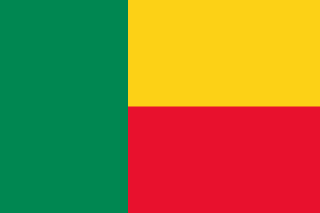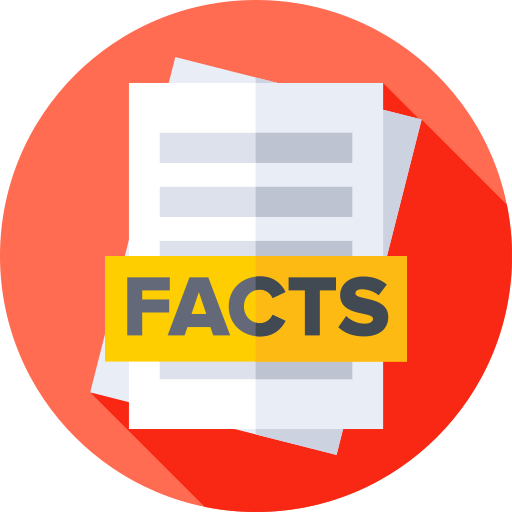Benin - Geography

Here, let us take a look at the Geography of Benin. Sandbanks create difficult access to a coast with no natural harbors, river mouths, or islands. Mother's mean age at first birth is 20.5 years (2017/18 est.) (Note: data represents median age at first birth among women 25-49), whereas, the Maternal mortality ratio is 523 deaths/100,000 live births (2020 est.)
Geographical data of Benin
| Location | Western Africa, bordering the Bight of Benin, between Nigeria and Togo |
|---|---|
| Geographic coordinates | 9 30 N, 2 15 E |
| Map references | Africa |
| Tarrain | mostly flat to undulating plain; some hills and low mountains |
| Natural Resources | small offshore oil deposits, limestone, marble, timber |
| Natural Hazards | hot, dry, dusty harmattan wind may affect north from December to March |
| Irrigated Land | 530 sq km (2019) |
| Major rivers (by length in km) | |
| Major aquifers | |
| Land Boundaries | 2,123 km |
| Border Countries | Burkina Faso 386 km; Niger 277 km; Nigeria 809 km; Togo 651 km |
| Coastline | 121 km |
| Climate | tropical; hot, humid in south; semiarid in north |
| Area | |
| Total Area | |
| Land Area | 110,622 sq km |
| Water Area | 2,000 sq km |
| comparative Area | slightly smaller than Pennsylvania |
| Maritime Claims | |
| Territorial sea | 200 nm; note: the US does not recognize this claim |
| Continental shelf | 200 nm |
| Exclusive fishing zone | 200 nm |
| Elevations | |
| Highest point | unnamed elevation 675 m; located 2.5 km southeast of the town of Kotopounga |
| Lowest point | Atlantic Ocean 0 m |
| Mean elevation | 273 m |
| Land Use | |
| Agricultural land | 43.1% (2022 est.) |
| Agricultural land: arable land | arable land: 31.4% (2022 est.) |
| Agricultural land: permanent crops | permanent crops: 6.7% (2022 est.) |
| Agricultural land: permanent pasture | permanent pasture: 4.9% (2022 est.) |
| Forest | 26.9% (2022 est.) |
| Other | 30% (2022 est.) |
Population Distribution
The population is primarily located in the south, with the highest concentration of people residing in and around the cities on the Atlantic coast; most of the north remains sparsely populated with higher concentrations of residents in the west as shown in this population distribution map
People and Society
In Benin, the different Ethnic groups are such that we have: Fon and related 38.4%, Adja and related 15.1%, Yoruba and related 12%, Bariba and related 9.6%, Fulani and related 8.6%, Ottamari and related 6.1%, Yoa-Lokpa and related 4.3%, Dendi and related 2.9%, other 0.9%, foreigner 1.9% (2013 est.)
| Population | |
|---|---|
| Pop growth rate | 3.29% (2024 est.) |
| Birth rate | 40.3 births/1,000 population (2024 est.) |
| Death rate | 7.6 deaths/1,000 population (2024 est.) |
| Health expenditure | 2.6% of GDP (2021) |
| Physicians Density | |
| Hospital bed Density | 0.5 beds/1,000 population |
| Total fertility rate | 5.34 children born/woman (2024 est.) |
| Gross reproduction rate | 2.61 (2024 est.) |
| Contraceptive prevalence rate | 15.5% (2017/18) |
| Est married women (ages 15-49) | 68.3% (2023 est.) |
| Literacy | age 15 and over can read and write |
| Education expenditures | 3% of GDP (2020 est.) |
| Net Migration rate | 0.2 migrant(s)/1,000 population (2024 est.) |
| Nationality | Beninese | Beninese (singular and plural) |
| Languages | 55 languages; French (official); Fon (a Gbe language), Yom (a Gur language) and Yoruba are the most important indigenous languages in the south; half a dozen regionally important languages in the north, including Bariba and Fulfulde |
| Religions | Muslim 27.7%, Roman Catholic 25.5%, Protestant 13.5% (Celestial 6.7%, Methodist 3.4%, other Protestant 3.4%), Vodoun 11.6%, other Christian 9.5%, other traditional religions 2.6%, other 2.6%, none 5.8% (2013 est.) |
| Age Structure | |
| 0-14 years | 45.3% (male 3,360,027/female 3,294,201) |
| 15-64 years | 52.2% (male 3,727,040/female 3,951,786) |
| 65 years and over | 2.5% (2024 est.) (male 166,191/female 197,807) |
| Dependency Ratios | |
| Total dependency ratio | 84 |
| Youth dependency ratio | 78.3 |
| Elderly dependency ratio | 5.7 |
| Potential support ratio | 17.7 (2021 est.) |
| Median Age | |
| Total | 17.2 years (2024 est.) |
| Male | 16.6 years |
| Female | 17.7 years |
| Urbanization | |
| Urban population | 50.1% of total population (2023) |
| Rate of urbanization | 3.74% annual rate of change (2020-25 est.) |
| Major urban areas (Pop) | 285,000 PORTO-NOVO (capital) (2018); 1.253 million Abomey-Calavi, 722,000 COTONOU (seat of government) (2022). |
| Sex Ratio | |
| At birth | 1.05 male(s)/female |
| 0-14 years | 1.02 male(s)/female |
| 15-64 years | 0.94 male(s)/female |
| 65 years and over | 0.84 male(s)/female |
| Total population | 0.97 male(s)/female (2024 est.) |
| Infant Motality | |
| Total | 52.9 deaths/1,000 live births (2024 est.) |
| Male | 57.8 deaths/1,000 live births |
| Female | 47.8 deaths/1,000 live births |
| Life Expectancy at birth | |
| Total population | 63 years (2024 est.) |
| Male | 61.1 years |
| Female | 65 years |
| Drinking Water Sources | |
| Improved: urban | urban: 79% of population |
| Improved: rural | rural: 70.8% of population |
| Improved: total | total: 74.7% of population |
| Unimproved: urban | urban: 21% of population |
| Unimproved: rural | rural: 29.2% of population |
| Unimproved: total | total: 25.3% of population (2020 est.) |
| Sanitation facility acess | |
| Improved: urban | urban: 56.3% of population |
| Improved: rural | rural: 18.1% of population |
| Improved: total | total: 36.6% of population |
| Unimproved: urban | urban: 43.7% of population |
| Unimproved: rural | rural: 81.9% of population |
| Unimproved: total | total: 63.4% of population (2020 est.) |
| Alcohol consumption per capita | |
| Total | 1.25 liters of pure alcohol (2019 est.) |
| Beer | 0.81 liters of pure alcohol (2019 est.) |
| Wine | 0.02 liters of pure alcohol (2019 est.) |
| Spirits | 0.2 liters of pure alcohol (2019 est.) |
| Other alcohols | 0.22 liters of pure alcohol (2019 est.) |
| Tobacco use | |
| Total | 6.9% (2020 est.) |
| Male | 11.8% (2020 est.) |
| Female | 1.9% (2020 est.) |
| Child marriage | |
| Women married by age 15 | 9.4% |
| Women married by age 18 | 30.6% |
| Men married by age 18 | 4.8% (2018 est.) |
Demographic profile
All Important Facts about Benin
Want to know more about Benin? Check all different factbooks for Benin below.









